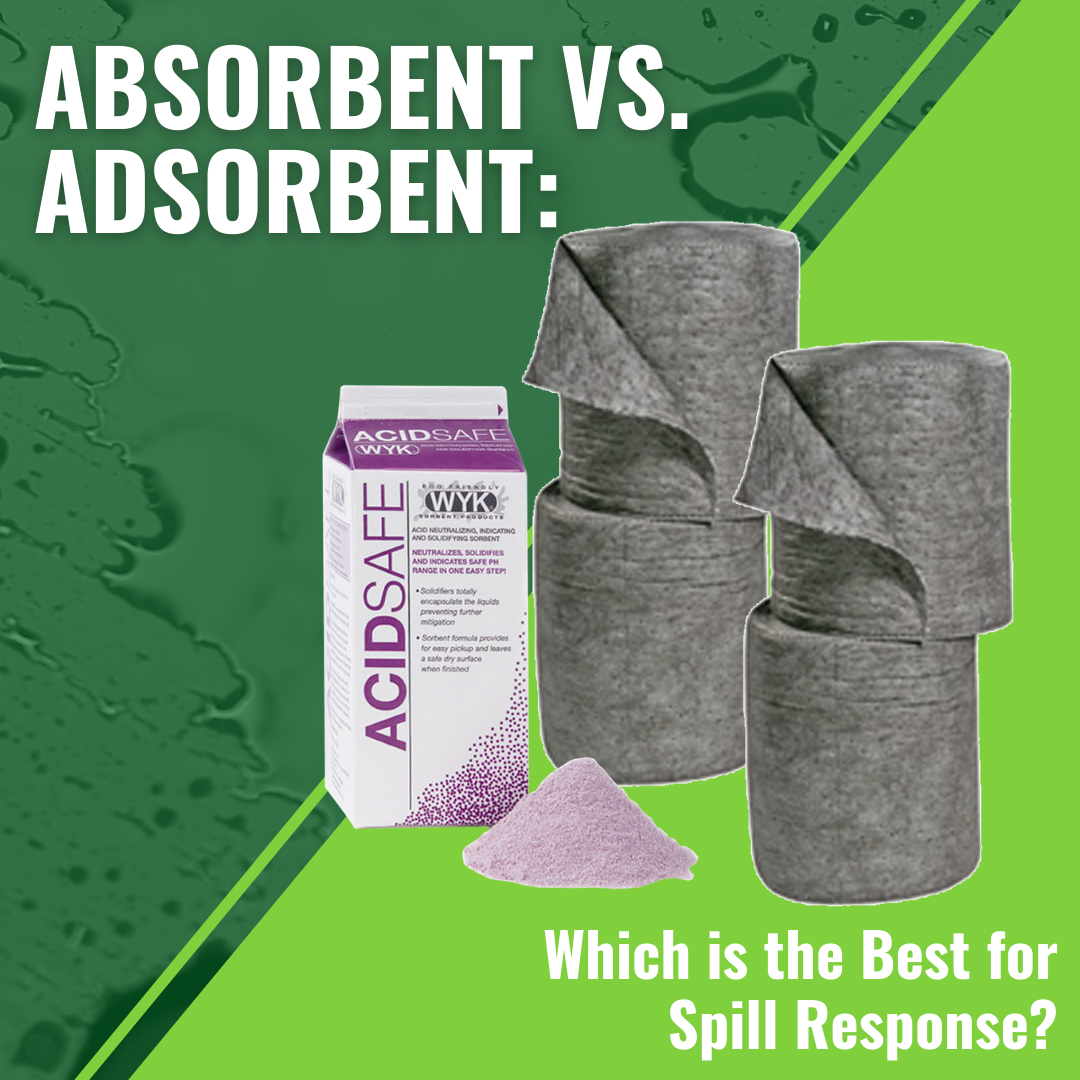We use cookies to make your experience better. To comply with the new e-Privacy directive, we need to ask for your consent to set the cookies. Learn more.
Absorbent vs. Adsorbent: Which is the Best for Spill Response?
When handling spills in the workplace, it’s important to use the correct type of product for clean-up. To prepare for an emergency — and to mitigate the potential hazards posed by any type of spill — personnel should understand the key differences between spill clean-up products.

Industrial cleanup products can be generally classified as absorbent or an adsorbent, though the term “sorbent" is sometimes used to describe both classes of product. Neither class of product is necessarily better than the other; different types of spills require a different approach.
Per the EPA, absorbent products “pick up and retain liquid distributed throughout its molecular structure causing the solid to swell 50 percent or more.” Most everyday cleanup products qualify as absorbents, for example: sponges, paper towels, and fabric towels. These items have an internal structure, or chambers, that can trap liquids or gases.
Adsorbents (with a “d,” not a “b”) are “insoluble materials that are coated by a liquid on its surface, including pores and capillaries, without the solid swelling more than 50 percent in excess liquid.” The process of adsorption attaches liquids or gasses to the surface of a solid material. Some of the most well-known examples of adsorbents are silica gel and activated carbon.
To put this another way, a spilled liquid (or gas, or dissolved solid) will adhere to the surface of an adsorbent, while a liquid will be taken into the absorbent material. As a general rule, adsorbents are selective — we’ll describe selectivity in greater detail in a moment. Because operations often require a variety of different types of adsorbents and absorbents, the term “sorbent" is used as a catch-all for industrial spill clean-up kits.
Choosing the Right Sorbent for Industrial Hazards
Many factors determine whether a sorbent is well-suited for a particular type of spill response, but these properties are the most important considerations for the vast majority of hazards: selectivity, surface area, regeneration, and ease of application.
-
Selectivity - This tells how specific a certain adsorbent or absorbent is. An unselective product can take in a variety of substances, where a selective product is only meant to be used with specific liquids. The Universal Fine Fiber Roll is an example of an unselective sorbent, while the company’s Oil-Selective Fine Fiber Roll is an alternative designed specifically for oil clean-up.
Selectivity is arguably the most important consideration to keep in mind when creating spill clean-up kits.
Spills containing acid, for example, need to be neutralized prior to cleanup; neutralizing sorbents like AcidSafe must be kept onsite and clearly labeled to ensure that personnel can address hazards quickly. Water-based or thinner oils can usually be contained well with an absorbent. For an absorbent to work, the molecules of the contaminant must be small enough to diffuse into the product. Denser oil molecules are often too large for an absorbent to work, and therefore need an adsorbent with a large surface area to be properly contained. Acid spills require specific sorbents as well, as they can eat through non-acid specific products.
Capacity - This determines the material capacity and retention of a sorbent. It’s sometimes expressed along with a surface area (as is the case with pads & pillows), but most high-quality sorbents will clearly define their capacity in gallons or comparable units.
- Regeneration - This determines whether or not a sorbent can be used more than once. Most industrial sorbents are single-use.
Ease of Application - This determines what conditions are best, and how a sorbent is meant to be applied. Broadly, this can also include special features that make a sorbent more capable of handling a task. For example, AcidSafe has a color-change indicator that shows when an acid has been completely neutralized.
Keep a Steady Supply of Sorbents Onsite
A wide variety of industries rely on sorbents, and for many reasons. Uses include moisture and humidity control, spill control and containment, pollution control, and waste management. Sorbents need to be appropriate for the hazard in question, and operations that keep multiple types of sorbents onsite should ensure that they are properly labeled, easily accessible, and near personal protective equipment (PPE).
Because spills create serious slip-and-fall hazards, they need to be addressed as soon as they occur. Standalone stations like the Deluxe AcidSafe Spill Station have high visibility and can dramatically improve spill response in an emergency. All supplies should be regularly refreshed to ensure that enough sorbents are available to handle any spill. Socks, drain covers, barrel patches, pads, and pillows should be kept in accessible areas.
As is the case with any hazard mitigation measure, staff should receive regular training to limit the effects of a spill if (and when) it occurs. OSHA notes that an effective spill response plan includes regular inventory of spill control materials and PPE, along with evacuation plans, reporting instructions, and decontamination protocols (where applicable).
With the right materials, handling a spill can be fairly straightforward — but without appropriate sorbents on hand, operations risk injuries and equipment damage. Maintaining the right materials ensures an efficient response to spills of all sizes.
